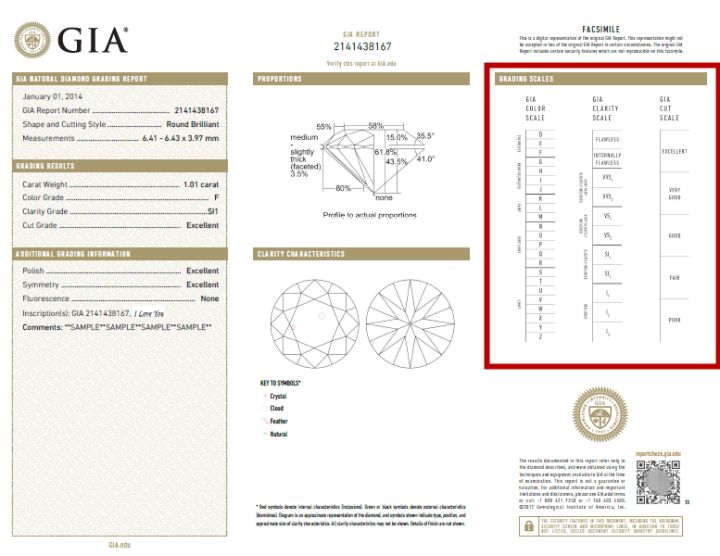Ⅰ. The title section of the certificate
Gemological Institute America®: GIA Laboratory logo;
January 1, 2014: Issue date. This is the date the diamond received its GIA certificate. Personally, I think from this date we can roughly know that the diamond is newly mined and freshly ground. على العموم, I recommend buying a GIA certificate issued within the last four months. At least it’s not a new certificate or the bottom of the case.
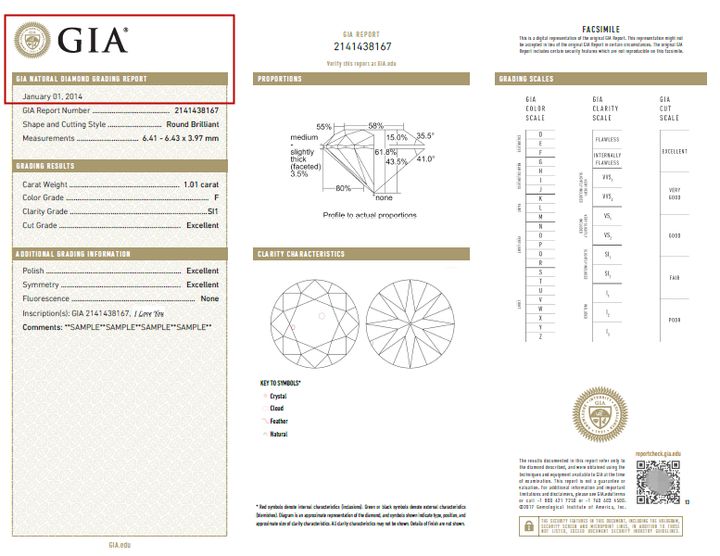
Ⅱ. The first part of the certificate
GIA report No. :2141438167 Diamond code, as the identification of GIA diamond;
Shape and cut: Diamond cut. A circle is a round diamond, and other shapes have their own unique names, such as the Emerald Cut;
بحجم: 6.41-6.43* 3.79مم, diameter (min-max)* height Diameter is allowed to be a range, the unit is mm, the generally round drill is very round, the maximum diameter and the minimum diameter difference is small or even equal. Now the difference between the maximum and minimum diameter of the stone is 0.03mm, which is quite a standard round shape.
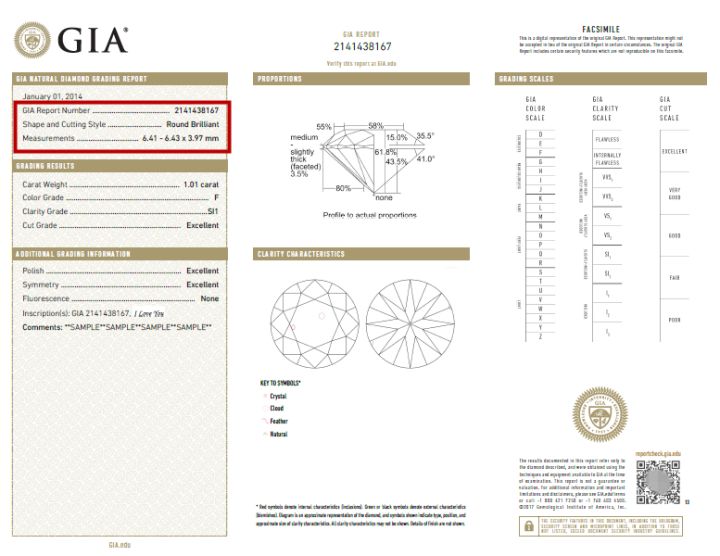
Ⅲ. Contents of Part II -4C of the Certificate
- Carat Weight: 1.01 Carat Carat is a unit of weight for diamonds, known as “قيراط” in Chinese. 1.00 carat =0.2 grams, 1 carat =100 points. Now the diamond is 0.50 carats, which is what we usually call 50 cents.
- Color Grade: The diamond’s Color Grade is F. Gem-grade white diamonds start with D and go through Z. The levels are intuitive. I suggest a slightly higher level, above H.
- Clarity Grade: SI1 is the Clarity of this drill. That’s the amount of diamond under 10 times magnification. GIA divides diamond clarity into FL, IF, VVS1-VVS2, VS1-VS2, SI1-SI2-SI3, and I1-I2-I3, which decrease from front to back. For clarity, I chose the best value SI1, which is very practical. It’s hard to see the inclusions, especially one-button diamonds unless you look closely with the naked eye.
- Cut Grade: This is a new Cut Grade. Look at the 4C cut look at this pull! In fact, it is a comprehensive measure of many indicators, including symmetry and grinding degree. The diamond was cut very well. على العموم, 3Ex means cut Ex, symmetric Ex, polished Ex. All three arguments are EX, so it’s called 3EX. It is recommended that you look for 3EX diamonds when you buy. Fire color and lightness are the best examples.
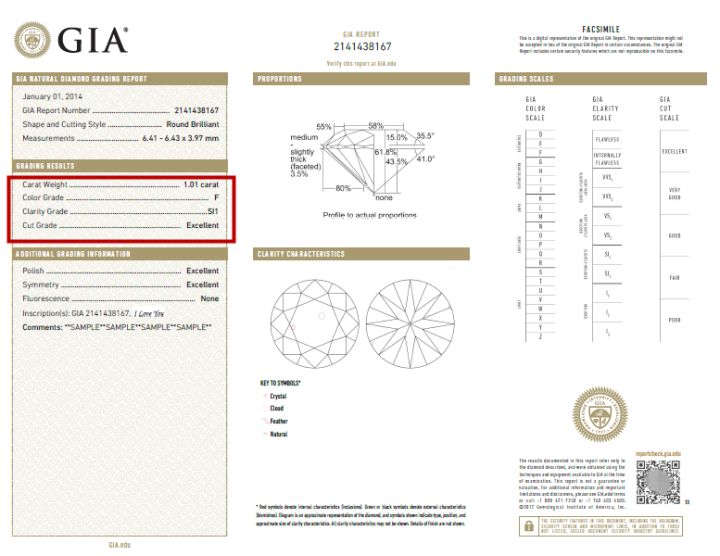
Ⅳ. Certificate Content Part III – Additional Information
- Polish: Polishing will increase the brightness of the diamond. But some diamonds have natural features, such as raw crystal faces, that cannot be polished away.
- Symmetry: This is to see if each face of a diamond is symmetrical. The diamond grader made his decision based on experience. A good diamond is symmetrical and perfect.
- Fluorescence: the phenomenon of diamonds glowing when excited by the energy of a UV fluorescent lamp. Natural diamonds have different luminous properties, some very strong, while others are inert. Usually, the fluorescence of diamonds is blue. Some FLUORESCENT diamonds, even if DO not PASS ULTRAVIOLET irradiation, naked eye ALSO CAN SHOW blue, unnatural, so do not recommend buying fluorescent diamonds.
- Inscription (S): laser imprint number on a diamond waist. GIA 2141438167 The number engraved on the diamond waist is black, GIA is the hollow letter. The number is consistent with the report number, which is used as the identification of GIA diamond;
- Comments: The remarks are to indicate other features of the diamond. Special attention should be paid to these comments. If it’s in bold, it could mean the diamond has been treated.
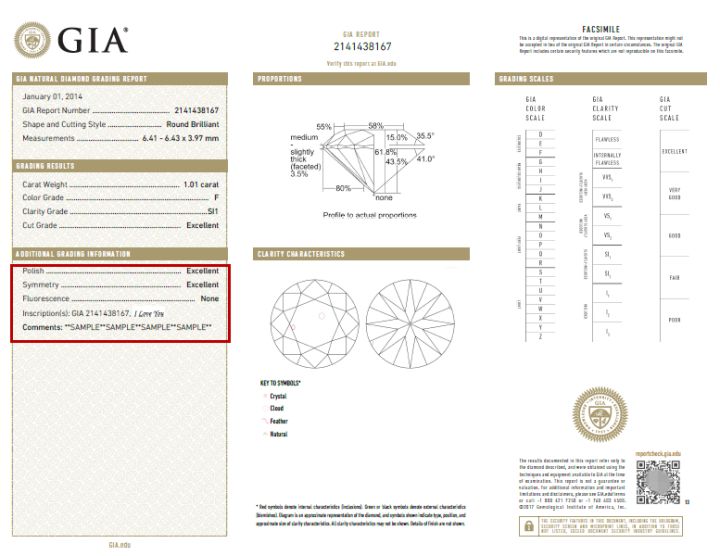
Ⅴ. Diamond cutting data map.
Through this figure, we can see a lot of data information about diamond cutting, such as table width ratio, pavilion depth ratio, crown Angle, waist thickness ratio, pavilion Angle, إلخ. The diamond has a platform width ratio of 58%, crown Angle of 35.5°, waist thickness ratio of 3.5%, and pavilion depth ratio of 43.5%. Look at these pictures. The stone cuts are good, very standard. Basically, you can tell how good the diamond cutting data is by looking at these data. Special experience value:
The width ratio is 56%-60%,
The waist thickness ratio is 3.5%-4.0%,
The standard crown Angle is 34.5°, and 1° is allowed to float, that is, 33.5° ~ 35.5° is better.
The pavilion depth ratio of 43.5% is the most standard, and it is best to allow a float of about 1%.
The data in this range is the best among 3EX data. The closer it is, the better it will be, so that the data of each cutting proportion of diamonds will be moderate and the performance will be relatively good.
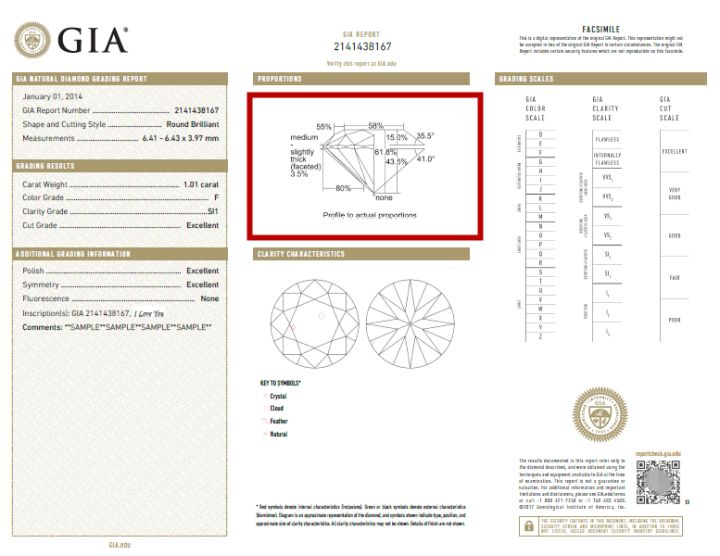
Ⅵ. Diamond clarity sketch
The main factors affecting clarity are crystal inclusions and clouds directly below the surface. The clarity of SI1 is obvious. With a clear sketch, we can probably tell where the flaw is. Try not to place the flaw directly under the tabletop, but it will be more obvious if it is. Try to choose the kind close to the waist. An advantage THAT is CLOSE TO the WAIST corrugator is when MAKING Mosaic, CANNOT SEE flaw. And the smaller it is, the better. Although the drawing is based on real objects, it is not obvious if the definition of the drawing is small.
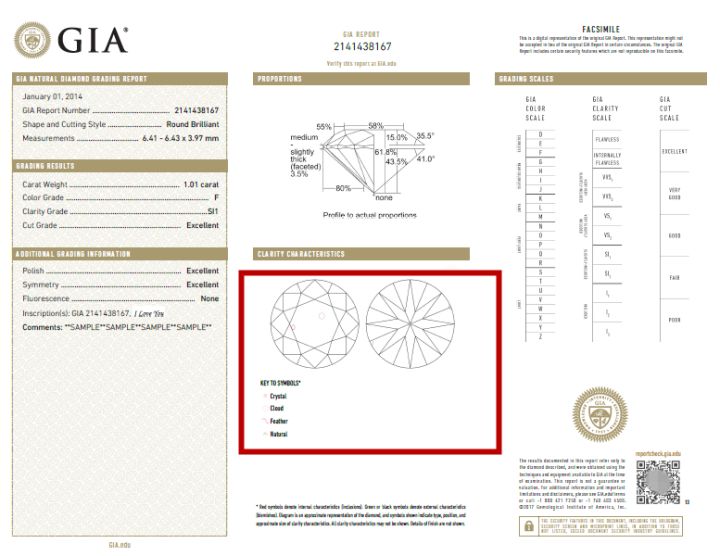
Ⅶ. GIA Diamond Grading chart.
The color level, the clarity level, the cut level, depending on which, you can see where the various grades of diamonds to buy are.
